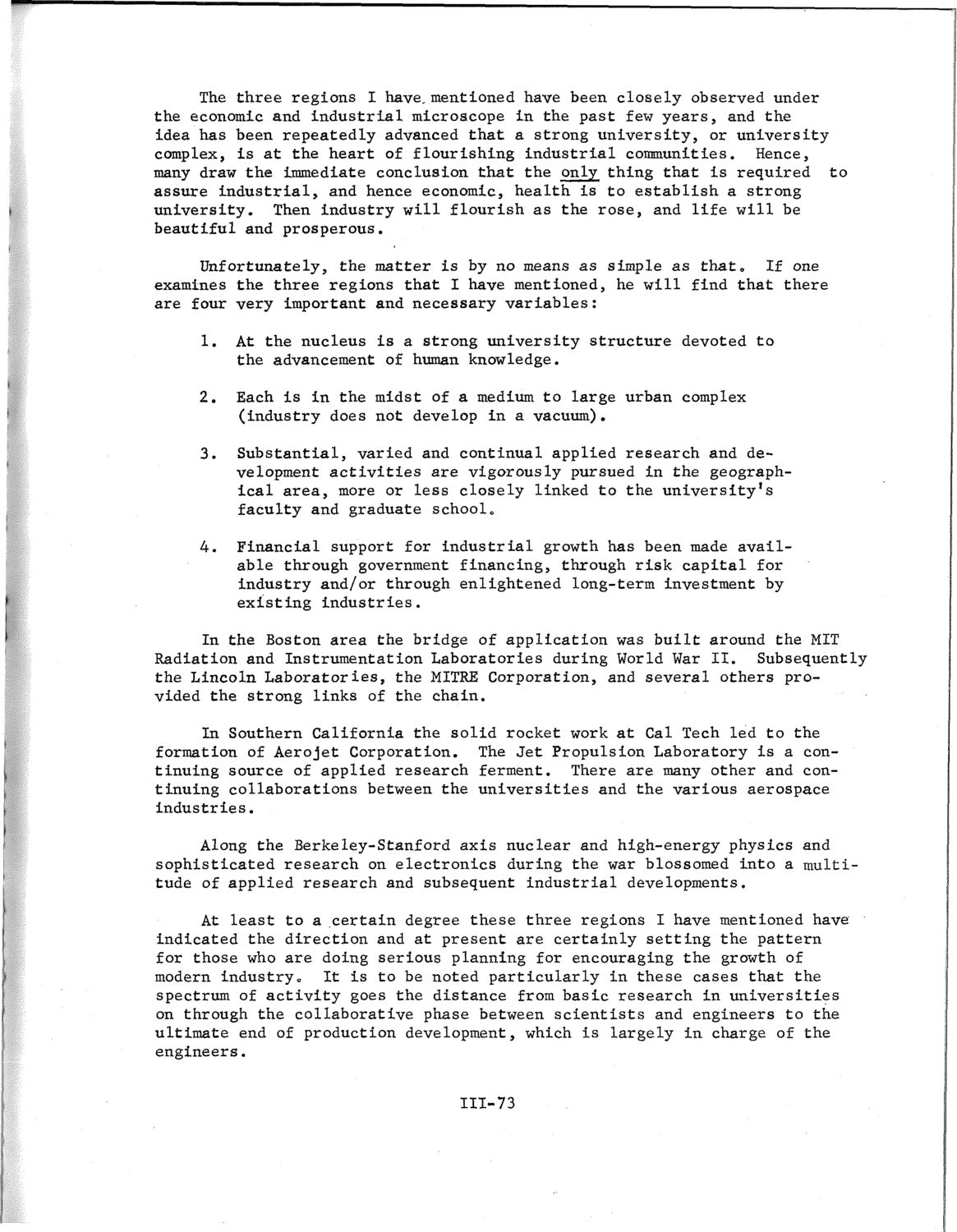| |
| |
Caption: SWE - Proceedings of the First International Conference of Women Engineers and Scientists
This is a reduced-resolution page image for fast online browsing.

EXTRACTED TEXT FROM PAGE:
The three regions I have, mentioned have been closely observed under the economic and industrial microscope in the past few years, and the idea has been repeatedly advanced that a strong university, or university complex, is at the heart of flourishing industrial communities. Hence, many draw the immediate conclusion that the only thing that is required to assure industrial, and hence economic, health is to establish a strong university. Then industry will flourish as the rose, and life will be beautiful and prosperous. Unfortunately, the matter is by no means as simple as that. If one examines the three regions that I have mentioned, he will find that there are four very important and necessary variables: 1. At the nucleus is a strong university structure devoted to the advancement of human knowledge. 2. Each is in the midst of a medium to large urban complex (industry does not develop in a vacuum). Substantial, varied and continual applied research and development activities are vigorously pursued in the geographical area, more or less closely linked to the university's faculty and graduate school,, Financial support for industrial growth has been made available through government financing, through risk capital for industry and/or through enlightened long-term investment by existing industries. 3. 4. In the Boston area the bridge of application was built around the MIT Radiation and Instrumentation Laboratories during World War II. Subsequently the Lincoln Laboratories, the MITRE Corporation, and several others provided the strong links of the chain. In Southern California the solid rocket work at Cal Tech led to the formation of Aerojet Corporation. The Jet Propulsion Laboratory is a continuing source of applied research ferment. There are many other and continuing collaborations between the universities and the various aerospace industries. Along the Berkeley-Stanford axis nuclear and high-energy physics and sophisticated research on electronics during the war blossomed into a multitude of applied research and subsequent industrial developments. At least to a certain degree these three regions I have mentioned have indicated the direction and at present are certainly setting the pattern for those who are doing serious planning for encouraging the growth of modern industry. It is to be noted particularly in these cases that the spectrum of activity goes the distance from basic research in universities on through the collaborative phase between scientists and engineers to the ultimate end of production development, which is largely In charge of the engineers. 111-73
| |